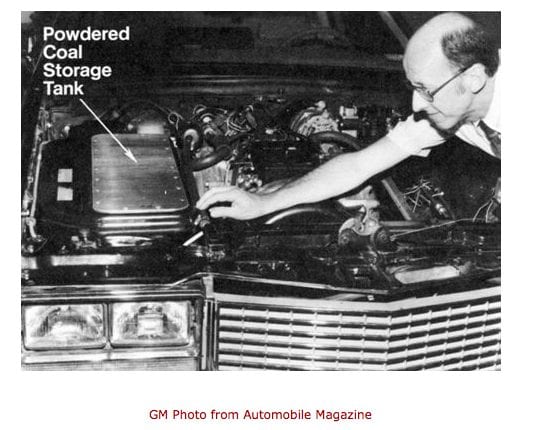Former Liberal Party leader and climate campaigner John Hewson has produced another shock to environmental activists, promoting a decades-old and never used coal technology that he says could extend the life of the vast brown coal resources in Victoria’s Latrobe Valley.
Hewson and his business partners say they have perfected a system that “refines” coal and turns it into granules that can then be used in power generation, as a replacement for diesel and gas, in transport, and in space heating. The potential market, they say, is in the “trillions” of dollars.
Furthermore, they say it could mean that thousands of coal mines and coal generators around the world will not need to close, despite the global mandate to cut emissions to meet climate change targets.
The technology was promoted by Hewson in a recent presentation in the Latrobe Valley at a $45-a-head dinner in Traralgon, ostensibly called to look at the transition possibilities for a region dependent on brown coal generation.
According to the Voices of the Valley public group, Hewson had been expected to talk about the future beyond coal, but instead gave a sales pitch for a new technology that could exploit the Latrobe Valley’s vast coal resources.
“Tonight’s presentation was a new version of the ‘coal is good, we must use it, clean coal’ mantra that we’ve been listening to for such a long time,” one of the group’s convenors said in a Facebook post.
Another attendee said Hewson claimed his technology could keep the valley’s brown coal reserves – which amount to billions of tonnes – operating for decades to come. “You’ve got a marvellous resource here, you’ve got to use it,” Hewson told the audience.

One attendee, Environment Victoria’s Cat Nadel, tweeted her frustration (see above), and followed it up with other comments:
“The Latrobe Valley needs a real just transition. It is more than a quarry and its community deserves better,” she tweeted. And then: “Hewson wants to ‘take the sting out of change’ and take the ‘nasties out of brown coal.’ So disappointing and far from reality.”
The fuel Hewson is promoting is called “corethane.” A video posted by one of Hewson’s business associates, Phil Hall, claims the process uses highly toxic hydrofluoric acid to remove air pollutants, burns as “cleanly” as gas and will elevate coal to equal status with oil and gas as a “universal fuel”. It dubs it the “last of the fossil fuels.”

It says corethane would cost 70 per cent less than diesel, 20 per cent less than gas, 90 per cent less than LNG, could produce electricity at just $60/MWh, and has more even distribution around the world than oil.
Best, it suggests – accompanied by the soaring theme music to the film “The Martian” – it can help avoid the closure of coal mines and generators around the world, and ensure the “long-term survival” of the coal industry.

It is not the first time that Hewson and his business partners have courted controversy in recent months. In Adelaide in May, Hewson promoted a new solar tower and storage technology using graphite, and developed by a company he now chairs, Solastor Australia.
However, he upset many in the industry by attacking the molten salt technologies that are being rolled out across the world, and which are promoting competing projects in Port Augusta in South Australia. He described those technologies as redundant and made claims against them that were demonstrably not true.
“Some of the information apparently quoted at the Solastor launch seems to ignore recent data and experience,” said Andrew Want, the head of the Australian Solar Thermal Energy Association. “This is unfortunate, as it has made what should have been a welcome announcement for CST in Australia needlessly, and unhelpfully, contentious.”
Hewson now appears to have embraced another technology that no one else is touching. Momentum Refining, apparently a sister company to Momentum Energy and Resources, which is a joint owner in Solastor Australia, is promoting the corethane technology, although it recognises that no one else has been able to find a commercial application.
(The author of the video, Phil Hall, is a director of Solastor Australia. Hewson is the executive chairman)
Refined coal, it notes in the Vimeo presentation, was trialled by the US Department of Defence in the 1980s, and can – at least in theory – be used in internal combustion engines, both heavy vehicles, ships, military vehicles, and in “cars, vans, trucks, boats, planes and motorbikes.” It suggests that the opportunities in transport are significant.
The Vimeo clip highlights the trials of “coal-fired” cars, claiming that two General Motors Eldorados were fitted with the technology, and that “the use of refined coal as a transport fuel was proven.”

This article, however, mentions only one Eldorado fitted with a coal-fired engine (see picture above). Apparently it was the last one off the production line and no one is really sure what happened to it. It certainly wasn’t a hit.
Retired GM engineer John Schult described the system to the NY Times in 2009:
“To keep the coal dust ready for delivery to the engine, it had to be continuously agitated. Then a small conveyor belt delivered the coal to the gasifier, the first section of G.M.’s automotive turbine engine. When you stepped on the gas pedal, it actually moved a potentiometer that varied the speed of the coal conveyor belt. More fuel resulted in more power.”
For lots of reasons, the technology didn’t take off. And it’s hard to imagine it would in an era of electric cars and Tesla vehicles that can deliver a range of 600km or more and the fastest acceleration of any production car.
The Vimeo also claims that coal refineries can be built as modules and combined to create coal refining complexes of “virtually any size or scale”. And while it admits that there are no such coal refineries anywhere in the world, it claims it has the “only known, proven and tested coal refining process”.
Indeed, the video sees a market for 10,000 coal refineries, worth $3 trillion in coal refining alone, and a further $1.6 trillion market in corethane sales. These numbers do not include the value of the transport and diesel markets.
Environmental activists said they were shocked that Hewson – known to environmentalists as strong proponent for decisive climate action – should be promoting technology that could extend the life of the valley’s vast coal mines.
They say that these coal mines have serious environmental issues even before the coal gets shovelled into highly polluting coal generators – issues such as dust and bushfire risk.

It got an immediate response on Twitter, which prompted Hewson to tell the audience that “there must be greenies in the room.” His proposal was compared to a similar push by John White, of Ignite Energy, to export brown coal. That proposal received the support of the then state Coalition government and the Abbott government.
There was concern that the proposal was getting support from some business groups in the area, and some conservative members of the local council. One attendee wrote in a blog headlined “climate con” that: “His story was disturbing and deceiving”.
The blog also raised questions about the large-scale use of hydrofluoric acid in the region.
“What is most intriguing of all, according to Hewson and the video, this technology has been tested and proved in pilot studies by the US since the late 70s, again in the 80s and 90s yet no one has picked it up as a viable option and developed it over the next 30 years. We ask WHY?”
Another attendee, Dan Caffrey, of the Latrobe Valley Sustainability Group, said: “I represent a group of very disappointed people. It felt like we were being mugged by the Messiah.”
Update: The video posted on the vimeo website by Phil Hall has been removed since the publication of this article. We have also update article to clarify that acid being used is hydrofluoric, not hydrochloric as wrote. Hydrofluoric acid is an acute poison, which you can read about here).










